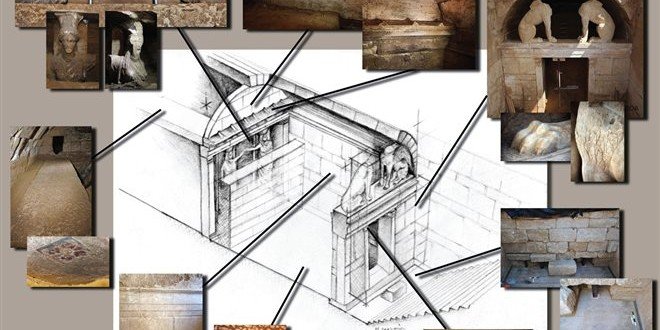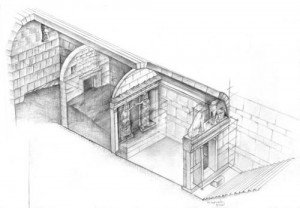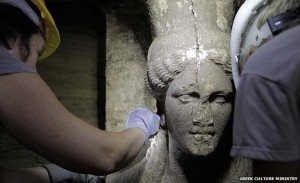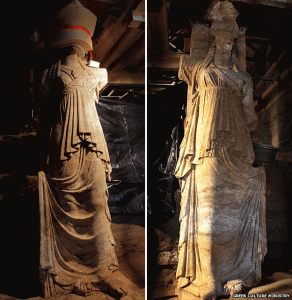More Wonderful Finds! Updated
 Archaeologists, excavating the ancient royal tomb at Amphipolis in northern Greece, continue to unearth more wonderful finds.
Archaeologists, excavating the ancient royal tomb at Amphipolis in northern Greece, continue to unearth more wonderful finds.
The latest is two larger-than-life sculpted female figures, known as Caryatids, which were discovered on Saturday, 6 September. The figures, standing 3.67 metres tall, are positioned above and at either side of an inner door and originally stood with outstretched arms, ‘guarding’ the entrance to the second antechamber.
The figures, as with the entire tomb unearthed so far, are made from marble imported from the ancient quarries at Aliki on the island of Thassos, which lies 70 km to the east. Thassian marble continues to be exported from the island to this day and is renowned as one of the most beautiful in the world.
The tomb, the largest ever found in Greece, has led to considerable speculation as to who from the era of Alexander the Great are buried within this monumental mausoleum.
Work continues to gain entry to the inner tomb and finally the burial chamber(s), when hopefully the mystery will be solved.
Update 23 September 2014:
The archaeological team have now cleared the doorway of the two Caryatids and entered the second antechamber, only to find that there is a third antechamber behind the next doorway. This chamber, as with the previous two, is partially filled with soil deposits washed in over the centuries. The archaeologists estimate the deposits are as much as 4.5 metres deep, covering the next doorway to the level of the lintel. These will have to be cleared before progress through the tomb can resume.

Evidence from the observable lintel, confirms that this next doorway is offset in the wall and much smaller than those into antechambers 1 and 2. This antechamber is also lower than the first two, leading to speculation that the burial chamber(s) may actually lie at a much deeper level.
The General Secretary of the Greek Ministry of Culture, Lina Mendoni, indicated on Tuesday that those who built the massive tomb “had taken measures to counteract tomb raiders.”
From the evidence so far observed, ancient robbers attempted to gain entrance to the tomb but were unsuccessful in reaching the inner antichambers. This could mean that both the burials and their contents are untouched. If so, then this is likely to be the most amazing archaeological discovery since the opening of the tomb of Tutankhamun by Howard Carter in 1922.



